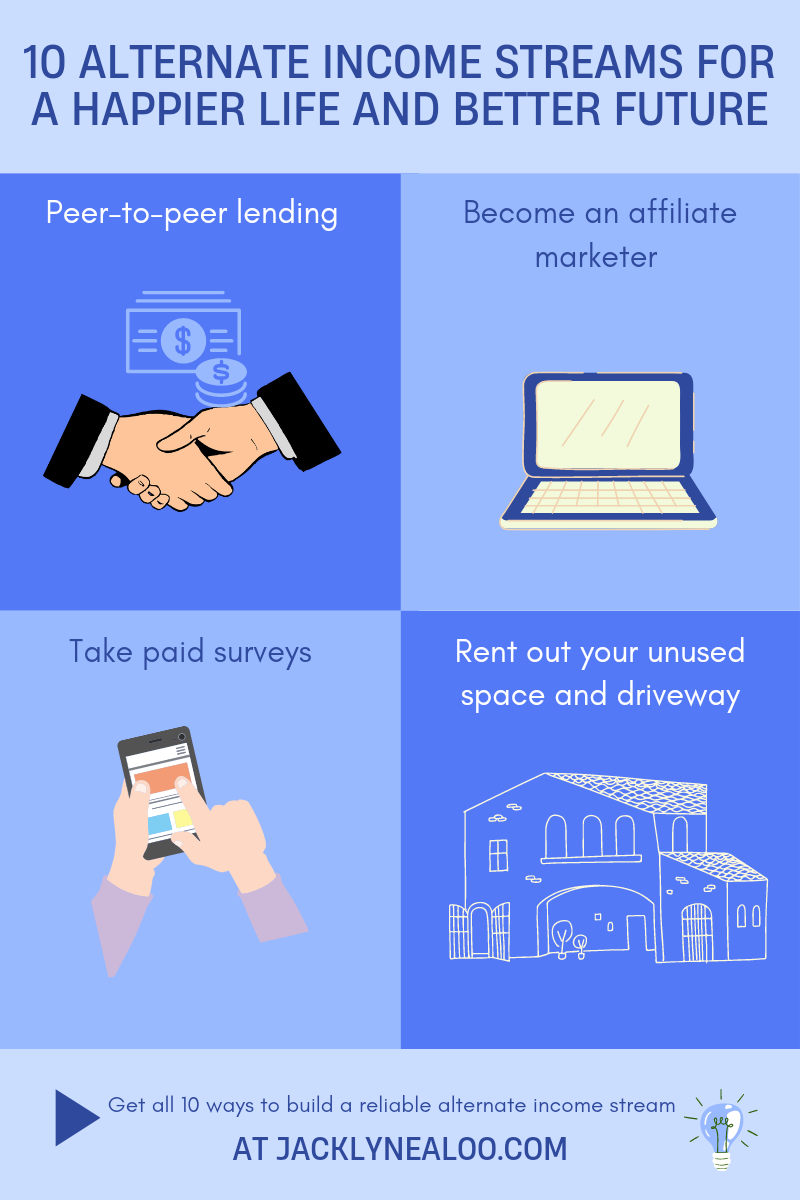
5 Different Ways to Homeschool That You Never Knew Existed
There are so many different ways to homeschool. Like I mentioned in my other article – The Complete Guide to Homeschooling Your Child And Why It’s the Best Option, I will buttress the different types of homeschooling.
The type you choose will depend on your child’s needs, your family situation, and your personal beliefs. Homeschooling doesn’t have to be all-or-nothing. You can mix and match methods from several different types of homeschooling and create a unique education plan that works for your family.
With so many options, it’s not always easy to decide which kind of homeschooling is right for you, your family, and your children. To help you get started, we’ve created this helpful guide to the different types of homeschooling. Each section includes pros and cons, things to consider before implementation as well as examples of how other families have implemented that type of homeschooling in their own home.
Traditional Homeschooling- What is Traditional Homeschooling?
In the United States and some other countries, the term ‘traditional homeschooling’ refers to families teaching their children at home using a curriculum designed specifically for homeschoolers.
Traditional homeschooling has several advantages and disadvantages.
Advantages of traditional homeschooling include:
- The focus on academics is one of the biggest advantages of homeschooling. When students are taught in a classroom setting, they are often overwhelmed with all of the different subjects they need to learn. Homeschooling allows students to focus on one subject at a time, allowing them to really get a deep understanding of the material.
- Another advantage of homeschooling is that it allows students to learn at their own pace. If a student is ahead of the class, he or she can take more advanced classes. Similarly, if a student is behind the class, he or she can take classes that are remedial.
- Homeschooling also provides students with more one-on-one attention from their teachers. This attention can help students develop better study habits, such as taking breaks and staying on task.
- Additionally, homeschoolers are more likely to be well-rounded individuals who are interested in many different things and have a variety of interests and passions—a result of having more time to pursue those interests.
- Another advantage of traditional homeschooling is that it can help students gain a sense of independence and self-sufficiency that they might not develop in other educational settings. When students are responsible for scheduling their own classes and completing their schoolwork on their own, they become more confident in their abilities and can develop better work ethic and time management skills that they can carry over into their future careers (if they choose to attend college or enter the workforce).
Some disadvantages of traditional homeschooling include:
- One major disadvantage of traditional homeschooling is that it can be difficult for students to keep up with the same academic standards as other students who attend public or private schools because academic standards vary from state to state, school district to school district, and even teacher to teacher within the same school district.
- In order for homeschooled students to be able to attend college or enter the workforce after graduating from high school, they may need to take classes or earn certifications that their peers who attend public or private school would not need in order to be eligible for admittance into a particular college or program (e.g., minimum GPA requirements).
- Additionally, it may be difficult for parents who are homeschooling their children to ensure that their children are staying current.
Unschooling: An Alternative Approach to Traditional Homeschooling
Unschooling is a learning style that is entirely self-directed. Unschooling is not about teaching kids bad habits; instead, it is a way of learning that allows them to discover and follow their interests, talents, and passions. It’s a hands-off learning approach that allows kids to spend their time in the way that suits them best.
There are no negative or positive consequences to unschooling since it is completely up to the individual to choose this type of learning or not. Some individuals may prefer a more structured environment while others may not.
Benefits of Unschooling
It is hard to say whether unschooling provides better or worse education than a standard curriculum. One of the benefits of unschooling is that it minimizes the amount of artificial learning materials that children are forced to consume. This allows children to learn at their own pace, which can be more efficient than traditional schooling.
Demerits of Unschooling
On the other hand, unschooling can lead to a lack of basic life skills and knowledge in specific subjects. This can result in difficulties in finding work or attending university. Additionally, anecdotal evidence suggest that unschooled children may struggle with socialization due to a lack of social skills. However, some say that this is due to culture not the group.
Waldorf Education
Waldorf education is a philosophy of education that evolved from the educational teachings of Rudolf Steiner in the early 20th century. It aims to inspire a love of learning, preparing children for a bright future. Waldorf education values wisdom and creativity over academic achievement.
The overall aim is for children to be well-rounded individuals, who will go on to lead happy and successful lives.
Why should you consider Waldorf Education?
- Students become more independent and capable.
- Students learn how to study and how to follow a lesson on their own.
- Students develop a love for learning – Curiosity is encouraged.
- Students are more self-motivated.
- More creativity and imagination is developed in students – Another key principle of Waldorf education is that children learn best through hands-on experience and creative play. This promotes both creativity and academic achievement in students
- There is more peace, calm, and harmony in the classroom.
- Students learn how to cooperate with each other, resulting in less conflict – Waldorf schools are based on the principles of anthroposophy, a holistic philosophy developed by Rudolph Steiner in the early 20th century. These principles include a deep respect for the dignity and mystery of human life and the natural world.
- Waldorf education develops self awareness, empathy, and conscientiousness in students – The relationship between body, mind, and spirit is acknowledged and addressed in Waldorf education.
- Waldorf education can have a positive effect on the nervous system of children – Elements of art, music, and handcraft are included in the curriculum.
Demerits of Waldorf Education
- Students are taught to ignore conflicting information, which can lead to gullibility and lack of critical thinking skills
- Children may be taught to follow irrational or pseudoscientific theories that are part of the Waldorf curriculum.
- Small class sizes mean that teachers do not receive enough training, experience, or mentoring to effectively teach large classes
Christian Homeschooling: Faith-Based Homeschooling
Christian homeschooling is a style of homeschooling that focuses on teaching children the Word of God and faith-based principles. It is different from secular or non-religious homeschooling, which focuses on education and learning secular subjects with little regard to faith.
Christian homeschoolers believe that teaching their kids about God should be the central focus of their children’s education, not just an add-on to their studies.
Let’s look at what Christian homeschooling entails, its pros and cons, some popular curriculums for Christian home schooling, and some useful tips if you are thinking about homeschooling your child as a Christian.
Benefits of Faith-Based Homeschooling
- You are in control of what your kids are learning, and how they are learning it.
- You can focus on the areas that you think are most important.
- You can tailor the curriculum to suit your children’s individual needs.
- You can teach Bible Study lessons alongside the regular school work.
- There is less pressure to push your kids so that they can keep up with their classmates.
- Your kids will be surrounded by people who share the same values and beliefs as you do.
- You will have more time to spend with your children, which can be invaluable.
Cons of Faith-Based Homeschooling
One of the biggest cons of Christian/ Faith-Based homeschooling is that it is extremely time-consuming and can be extremely difficult to balance with a full-time job. Additionally, many families are not financially stable enough to be able to homeschool their children without incurring additional expenses.
Unlike Waldorf homeschooling style that is known for its emphasis on social and emotional development, faith-base homeschooling will not teach students how to work well with others to overcome individualism and competition.
HIPPY Homeschooling- Home Instruction for Parents of Preschool Youngsters
HIPPY is an acronym for Home Instruction Program for Preschool Youngsters. It is a cyclical program for the development of academic and life skills for young children, between the ages 0 and 6. The aim is to improve their school readiness and foster healthy child development. Its focus is on preschool children in low-income communities across the United States who are not yet in school and their families.
HIPPY was developed in Israel as a comprehensive home-based early intervention programme for families with young children who are at risk of educational and developmental difficulties, while a child is still very young. The pilot projects were a great success and the programme was expanded.
Currently, HIPPY is active in 60 countries around the world. There are several organizations rendering the service like Great Potentials Foundation, Focus Points, HIPPY International, and Child Welfare, to name a few.
Benefits of HIPPY Homeschooling
- You don’t have to go anywhere – your children can learn about nature, colors, shapes and more right in the comfort of your own home.
- You can learn the philosophies behind homeschooling together and create a supportive learning environment for your children that is unique to your family.
- This program helps families provide their children with an early childhood education at home despite both not working, which means they can learn at their own pace no matter how old they are!
- It supplies a full-time instruction support for parent-child teams.
- It offers 1:1 mentoring.
- It can help repair early childhood emotional issues and neurodevelopmental disorders.
- It creates a safe, loving learning environment for parent-baby teams.
- With HIPPY Homeschooling you and your children will learn together in a non-competitive relaxed environment that fosters self-confidence as well as an appreciation for diversity and inclusion while increasing social skills and improving language acquisition!
Breakdown
When people think of homeschooling, they often assume it means one specific kind: the traditional approach. However, there are actually many different ways to homeschool a child, each with its own set of benefits and challenges. By understanding these different types of homeschooling as well as their pros and cons, you can choose the right one for your child and family.
Traditional homeschooling is an approach that is rooted in old-fashioned ways of learning and a return to what many see as educational methods from the past. Traditional homeschooling isn’t for everyone, but it’s a valid option. You might feel that it’s the best way for you to teach your child. Or you might feel like it’s better than nothing.
Unschoolers believe that children learn best when they’re interested in something and given opportunities to explore it in their own way at their own pace.
Waldorf education centers on developing students’ sense of self through exploration of topics like math, language arts, science, music, art, physical education (PE), crafts, and home economics.
Christian or faith-based homeschoolers focus on providing an environment where faith thrives and parents have the opportunity to share their values with their child.
HIPPY Home Education Philosophy stands for Home Instruction for Parents of Preschool Youngsters (in other words, everything a good education should be!).
Contemplate different ways to homeschool your child. The decision about which approach is best for your child is one you’ll make on a case-by-case basis. Choosing the right way to homeschool your child is one of the most important decisions you will make for your child’s education.







 family bond and all you can think of is a vacation rental (
family bond and all you can think of is a vacation rental (


